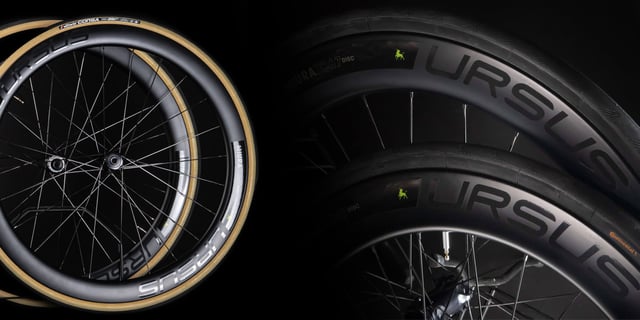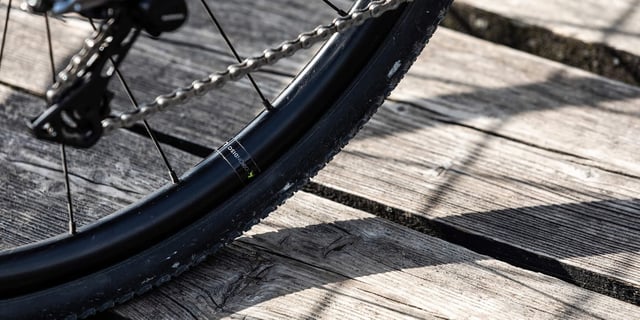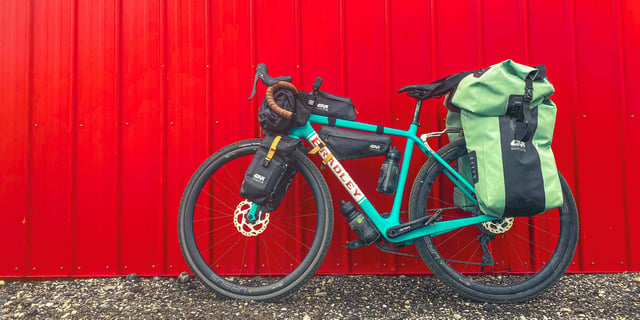Wheels for road bike and triathlon bikes have small differences to optimise the bike's performance during the competition.
Of course, your choice depends very much on the type of race you're entering: speed, long distance, resistance?
Some technical solutions - seemingly minimal - can improve your bike's race performance. In this article we outline the characteristics of road bike wheels and triathlon wheels.
But first, a few general tips on choosing wheels for your bike, for both road and triathlon cycling.
Advice for all disciplines
There are certain characteristics that apply to all cycling disciplines, because they depend on purely physical and mechanical factors. Knowing them will help you identify the best solution for the race you're entering.
1 - Deep-section wheels: more aerodynamic for triathlon and road cycling
Deep-section wheels always give an extra aerodynamic boost. They are heavier and higher. To gain initial speed, you need to employ more pedal force, but once running, they accumulate and release more kinetic energy.
You might prefer them in competitions where speed and resistance are equally important.
2 - Tubeless wheels: more robust and shock-absorbent
Tubeless tyres have no inner tube. They are growing in popularity because they allow you to keep the tyre pressure lower on your road or triathlon bike (but also in cyclocross or gravel bikes).
With lower pressure, the tyre is also less susceptible to punctures and lacerations. There's another advantage too, because tubeless tyres absorb shock during the race and therefore reduce mechanical wear and tear, which can damage both your bike and your body.
Just one reminder: to use tubeless tyres, you have to choose wheels with a slightly wider rim.
3 - Disc brakes regulate braking to your advantage
Disc brakes were a real innovation for cycling, first on road bikes and now spreading to all disciplines. On both triathlon wheels and road bike wheels, they help to regulate braking, just as they do in cars.
This type of brake is becoming the standard, partly due to the fact that rims are becoming wider to accommodate the discs.
Now we've got the gist of the general situation, let's get into the detail. What's the difference between the wheels of a road bike and those of a triathlon bike?
The characteristics of road bike wheels
Very briefly, here are some useful parameters to help you identify the features of wheels for road bikes:
- average rim width: 17 mm (but wider rims are becoming popular, from 19-21 mm);
- depth of rim: 33-45 mm;
- average weight: between 1200 and 1600 g, depending on the construction material and the size;
- tyres: preferably tubeless;
- brakes: preferably disc;
- material: aluminium or carbon fibre.
Both aluminium and carbon are lightweight and resistant, but carbon fibre offers substantially better performance: it is ultra-light and gives the bike excellent rigidity and responsiveness. If you need to choose wheels for a competition, carbon fibre can definitely help improve your performance. On the other hand, if you're a beginner and want to train on your road bike, you can start with hardwearing aluminium wheels, thus balancing performance, cost and durability.
The characteristics of triathlon wheels
Now let's look at triathlon. How to choose wheels for your bike? The answer is rather complicated, because there are numerous triathlon disciplines.
You might simply need wheels for a racing bike, if you're doing Olympic or Sprint triathlon. The features are practically identical to the ones we described above.
But for endurance races, Ironman, difficult terrain, MTB triathlon etc, the situation is completely different.
Let's try to summarise here again:
- Rim depth
- shallow-section wheels (under 30 mm): for uphill courses or frequent stops and starts;
- medium-section wheels (30-50 mm): versatile, suitable for any type of competition;
- deep-section wheels (above 50 mm): for flat or slightly sloping courses and resistance races such as Ironman.
- Tyres: preferably tubeless for triathlon bikes too;
- Brakes: preferably disc.
- Other accessories to choose carefully:
- the hub: good quality hubs facilitate the rotation of the wheels and thus improve the race performance of a triathlon bike;
- lenticular wheels: great performance but also very unstable in a side wind. This type of wheel is difficult to control, so recommended for expert athletes with excellent technical abilities on triathlon bikes.
When to choose deep-section wheels for triathlon
Deep-section wheels are particularly recommended for a triathlon bike on flat courses that are demanding in terms of resistance. For Ironman, they are practically indispensable.
However, there's nothing to stop you using them at other times too: many athletes prefer to always use deep-section wheels with a wider rim, tubeless tyres and disc brakes.
We've already explained that aerodynamics are the real advantage of deep-section wheels for triathlon. However, you should also bear in mind that these wheels lose a little stability when there's wind from the side and that, in some competitions where you're riding in a group, they struggle to reach their full potential.
If you want to get the best results from your deep-section triathlon wheels, we suggest choosing carbon fibre products: super-light, rigid and extremely responsive.
Ursus triathlon wheels
At URSUS we design, test and manufacture technologically advanced wheels for triathlon. We choose innovative design and materials to constantly improve the performance of triathlon bikes.
Our range of wheels for triathlon meets the needs of all kinds of athletes, amateur and pro alike, and all types of competition.
Find all the models available at: https://blog.ursus.it/it/ruote-per-bici-da-triathlon




